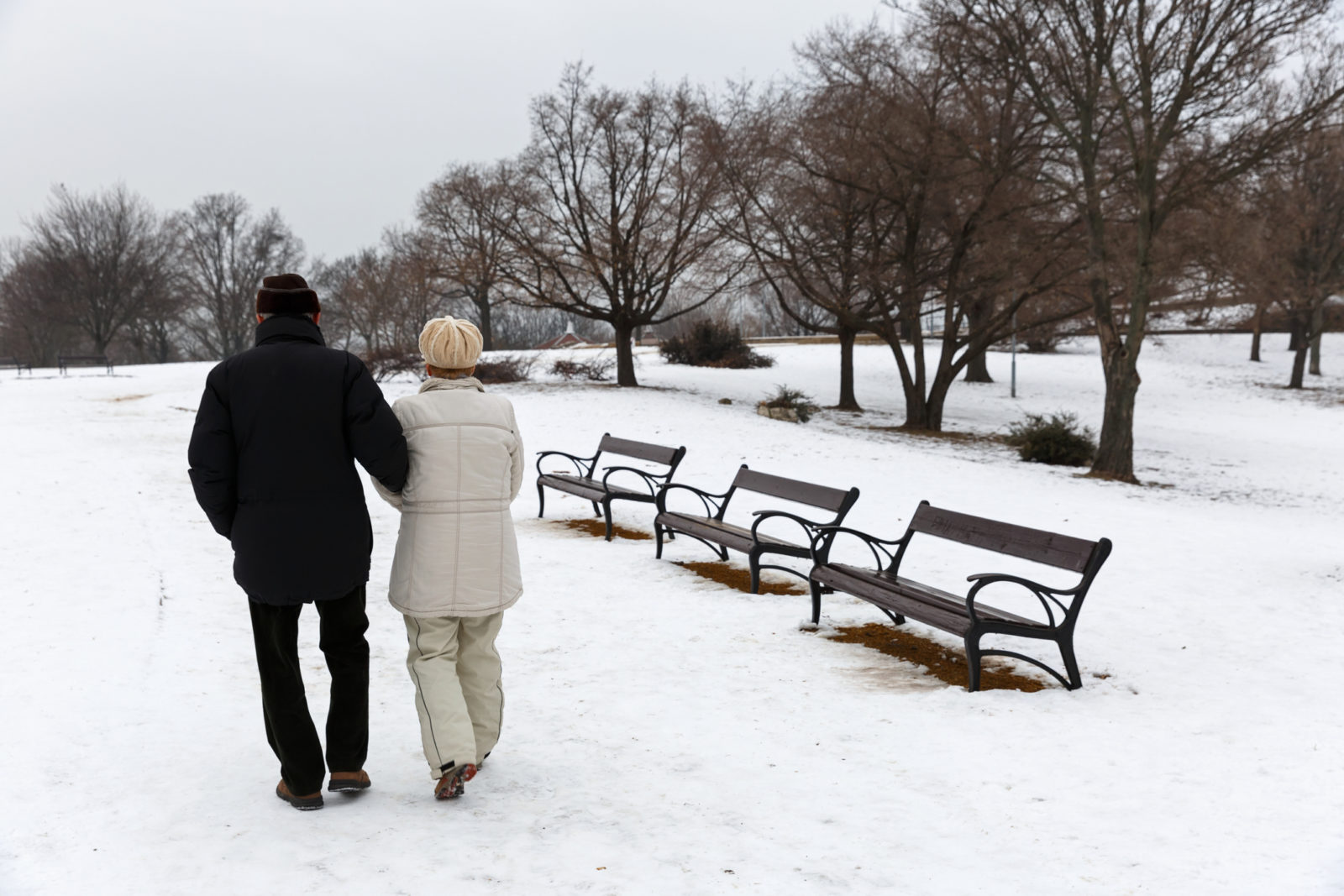How to Stay Balanced in the Midst of Winter’s Icy Conditions

Winter’s snow and ice can increase the risk of falls in older adults, especially among those who already live with a balance disorder. Balance disorders are common in older Americans. One study estimated that 24 percent of people older than 72 experience dizziness on a regular basis. Dizziness can be caused by a variety of factors, including medications, ear infections, certain heart diseases and conditions that specifically affect one’s balance.
Some of the more common balance disorders include:
Benign paroxysmal positional vertigo (BPPV)
Commonly known as simply “vertigo,” BPPV is one of the common balance disorders and is marked by an acute feeling of dizziness that occurs by a sudden change in the position of the head. It’s caused when tiny calcium crystals become loose and disrupt the sensors in the inner ear.
Labyrinthitis
This is caused by an inner ear infection, often as part of respiratory infection such as the flu, and causes dizziness and a loss of balance.
Ménière’s disease
This is a condition marked by vertigo, hearing loss, tinnitus (ringing in the ears) and a feeling of fullness or blockage in the ears. Its cause is unknown.
Perilymph fistula
This condition occurs when fluid from the inner ear leaks into the middle ear and can cause dizziness and nausea. It can result from a head injury, sudden changes in air pressure, surgery or ongoing ear infections.
If you’re experiencing any of the symptoms above, you should schedule an appointment with an otolaryngologist, often called an ENT (ear/nose/throat) doctor. He or she can help make a diagnosis and provide treatment. They can also determine if your condition may be a result of another underlying medical condition or medication.
Restoring balance into your life
Treatments range from the relatively simple (if you’re diagnosed with BPPV, your doctor may perform a series of movements to dislodge the crystals) to the more complex, which may include changes in diet, exercise or even surgery.
Not all balance disorders are curable, but symptoms can be mitigated. There are a number of exercises that can help people improve their balance. Tai chi and yoga have helped many people improve their balance and flexibility and both are low-impact practices that can be adapted so that nearly everyone can participate. There are also several exercises you can do at home. To learn more about ways to help improve balance condition symptoms, you may want to consider making an appointment with a vestibular rehabilitation therapist. These professionals are trained in developing an exercise program to help the body compensate for inner ear disorders.
Other tips for staying safe
In addition to getting treated for a balance disorder, here are some other ways you can lower your risk of falls during the winter months:
- Wear boots or shoes with good traction.
- Dress warmly – this will keep your muscles relaxed, reducing your risk of falling.
- Avoid going out if you can – if you must go out, plan ahead to allow for extra time so you’re not rushed.
- When getting out of your car, make sure both feet are firmly planted on the ground before standing.
- Be alert – pay attention to the surfaces you’re approaching and walk carefully on areas that aren’t clear of ice and snow.
![PATHWAYS Care Solutions, LLC [logo]](https://www.pathwayscaresolutions.com/wp-content/uploads/sites/207/2016/10/logo-new-oct4.jpg)
![PATHWAYS Care Solutions, LLC [logo]](https://www.pathwayscaresolutions.com/wp-content/uploads/sites/207/2016/08/new-logo.png)